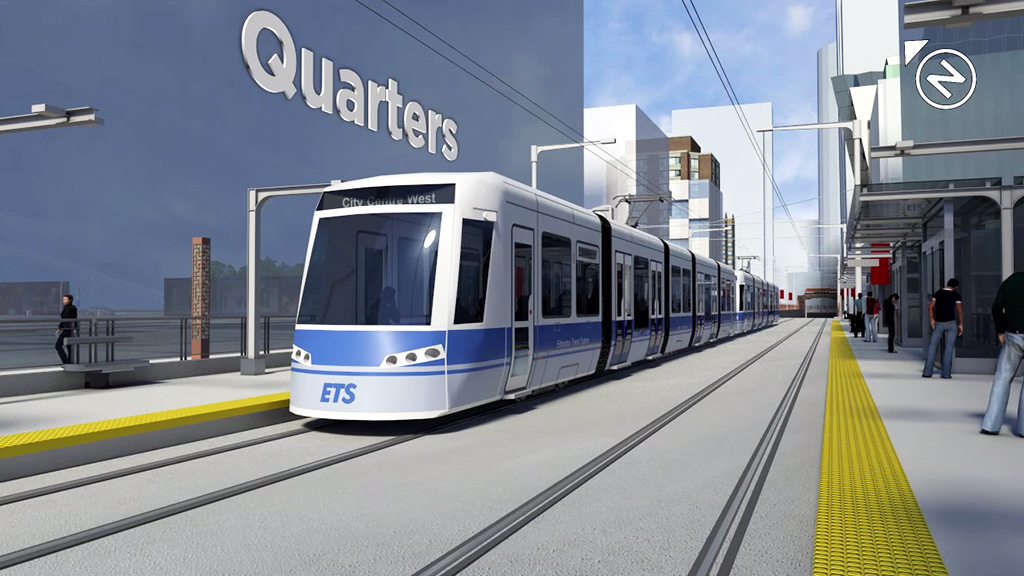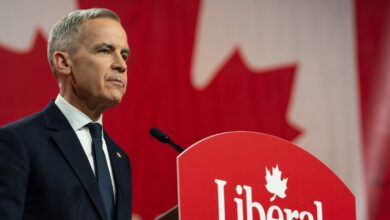 Screenshot
ScreenshotThe Edmonton LRT service currently only treads one trail from north to south, making it difficult to lose the bearing of your compass. Edmontonians don’t bear any shame sparing wrong directions or accidentally hopping on the wrong trail because you can only go one wrong way once. The new tracks, however, being laid will have a permanent impact on various expansions for the future development of the City of Edmonton. And despite some complaints, Edmonton’s LRT expansion will continue to move forward in a number of new directions.
As if wielded directly out of Edmonton’s Transportation Planning department’s “The Way We Move,” a document published in June 2012 outlining Edmonton’s transportation trajectory, a vision of public transit is coming to fruition. The Metro Line, a $665 million project that has been delayed five times, is expected to be opened in early 2015 servicing MacEwan, Kingsway Royal Alex and NAIT. The Valley line is a more extensive $1.8-billion line with 15 stations Lewis Farms and Millwoods-bound, aiming to be open to the public by the end of 2020.
Some people have criticized the process, including a disgruntled group of Edmontonians from Kingsway Mall arguing they hadn’t been given a reasonable amount of time to deal with the proposed NAIT LRT line The Edmonton Chinese community criticized the expansion, as the LRT on 102 Avenue would run directly in front of an elderly care facility for the Chinese community, essentially dividing the community. There’s always much controversy in the muster of building an LRT through paths inhabited by people for decades and community involvement will be imperative to ensure success for the LRT.
The expansion relies on the provincial and federal government. Both of which are struggling monetarily, and Alberta is facing a revenue shortfall in the range of $6 billion to $7 billion next year. But at whatever the cost, urban sprawl has become increasingly unfashionable in the realm of urban enthusiasts who have slighted the suburbs for increasing obesity, social isolation and unsustainability, and see the LRT as a vangaurd to a new age of City Beautiful. To harpoon the reader with statistics, “People who live in cities with well-developed rail systems spend 15 per cent less on transportation than in bus-only cities ($2800 vs. $3300 annually),” according to 4LRT.ca. Edmonton could also decrease its emissions by 3,000 tonnes of CO2 with an additional 30,000 LRT riders and a decrease of 120,000 auto users.
However, it’s difficult to turn trends, particularly ones that favour a market of mass-produced monoculture single family homes. The LRT, which is the centrepiece of dense development if done right, could have the potential to change this. An LRT can be grounds for an oasis of mixed-use functions, combining walkability with commercial and residential while connecting multinodal regions. However, this requires thorough rezoning, utilitarian transportation models and a portion of the city’s budget. Hope lies in induced demand with strategic positioning of LRT stations and in-depth radius area plans.
Although generations Y and Z (cohorts who this LRT is primarily catering to) tend to envision metropolition lifestyles, there’s always the possibility that when we become professionals with kids and minivans, we’ll go back to buying single-family homes outside of the Anthony Henday. Will the LRT fail in this case?
According to Edmonton’s 2005 Household Transportation Survey, Edmonton’s largest proportion of trips are currently made from the suburbs to the city center at peak periods of commuting. In areas where there is an LRT, demand is met, such as in North and South Edmonton where Park and Rides are used by thousands of commuters every day at nearly the same speed it would take to drive. The next highest demand for commuters coming from the suburbs using transit is in the south-east. This demand is from various societal stratums and will be met with the construction of the Valley Line in the direct of the South West.
There’s hope for our city and the low-lying light rail to take you down to electric avenue. But after all the delays, hopefully it comes at a time where LRTs are still fashionable and not fashionably late.





Edmonton sucks for progressiveness. Projects take too long and people forget about them. Time and time again this city has invested in crap. The metro-line is a good example, 665 million dollars worth of worthless crap.
Edmonton will always be a car city as long as we are an oil province.
Many Z’s and Y’s wont be staying here much longer. There are too many places around the world, and Canada which conduct themselves with integrity and complete public projects swiftly.
im getting sick and tired of being a second-class citizen in this city. And that goes all the way to the top. responses i get back from my MLA regarding issues, are basically “sorry”
Well said